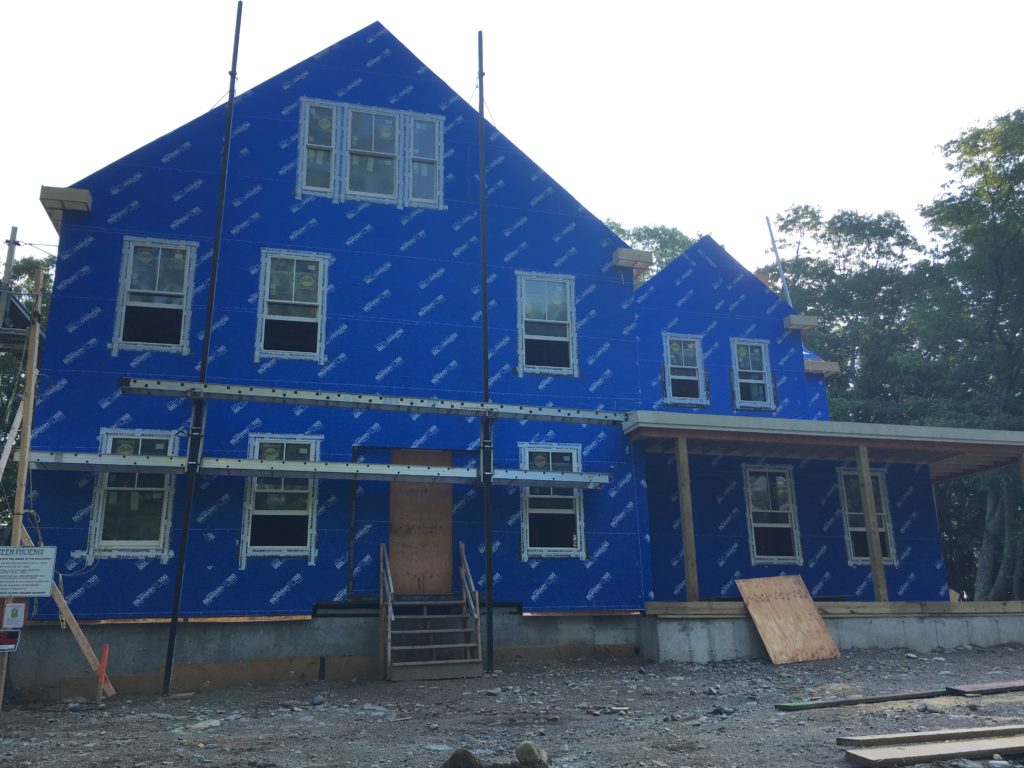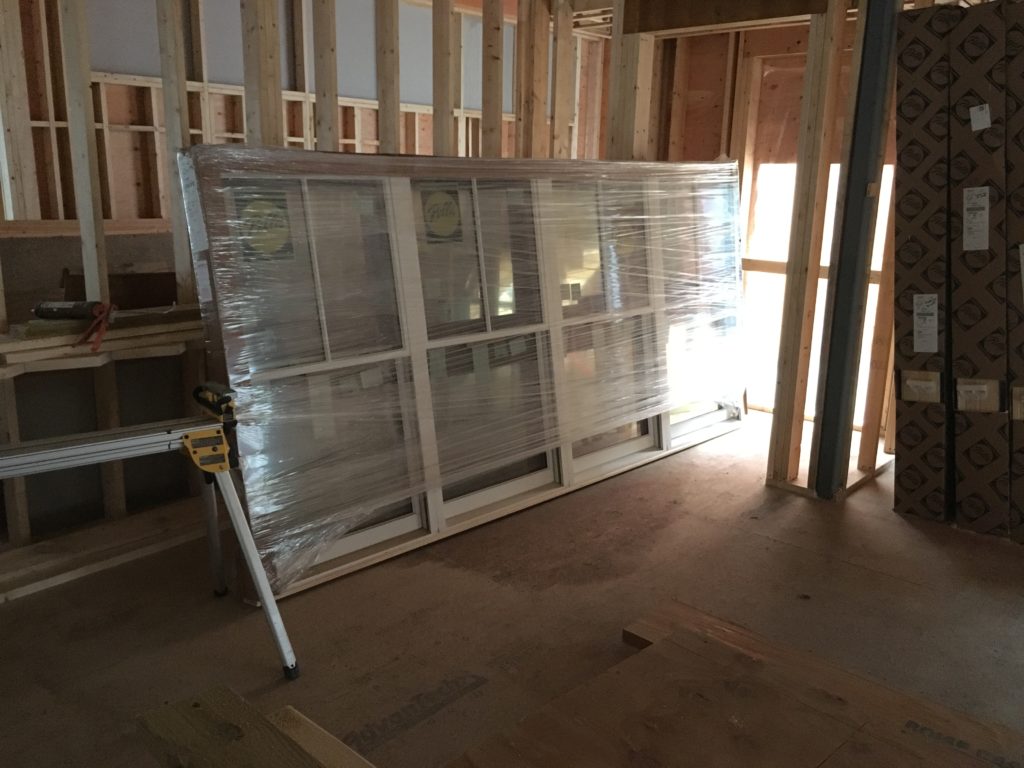The windows arrived a few weeks ago. Now that the blueskin is up on most of the house the team has been busy installing and sealing them into position.
Window selection was a challenge for this project. Many high-performance projects use casement or European-style tilt/turn windows, because they typically provide better insulation values than more traditional double-hung windows. The casement or tilt/turn windows have multiple hinge points so they can more easily support triple-paned windows (sashes with three layers of glass), which can get heavy for windows that have to be lifted. Casement and tilt/turn windows also can be more airtight and watertight because they are just one piece that closes flush against the frame, whereas double-hung windows have two separate sashes that move independently and have a small gap between them, so it’s much harder to make an airtight window. The most efficient window frames are typically made of vinyl, fiberglass, or other insulating materials with additional insulation inside the frame, to reduce the amount of heat that leaks out through the window frames. Often they’re clad with aluminum, for improved durability.
Despite this, you’ll notice that our windows are Pella Architect Series wood double-hung windows. Why? Because this is an historic house on a designated scenic road, using these windows helps us preserve the character and architectural integrity of the 1897 home while significantly improving their performance, and aligns with the desires of the Historical Commission to minimize aesthetic changes to the home’s exterior.
So given our need to use traditional double-hung windows, we selected Pella’s double-glazed Architect series windows, with the best insulation package we could get (low-e coatings, argon-filled). We have a window insulation value of U=0.25. The very best tilt/turn windows can get down to U=0.12 or so, while double-hung windows seldom have U values much below 0.21. Our energy modeling suggested that installing these windows achieved the best balancing of thermal performance with cost. We’re excited to be working with Pella on this project, not just because they’re attractive windows but also because we like Pella’s performance and quality control.
A note about window performance: when we talk about wall insulation, we use “R” values. In windows, the convention is to use “U” values, which are the reciprocal of the R value (U=1/R). So in designing walls we want a high R-value. In selecting windows we want a low U-value. In the Boston climate zone, homes that want to meet Energy Star criteria need windows with a U value of 0.27 or below.




